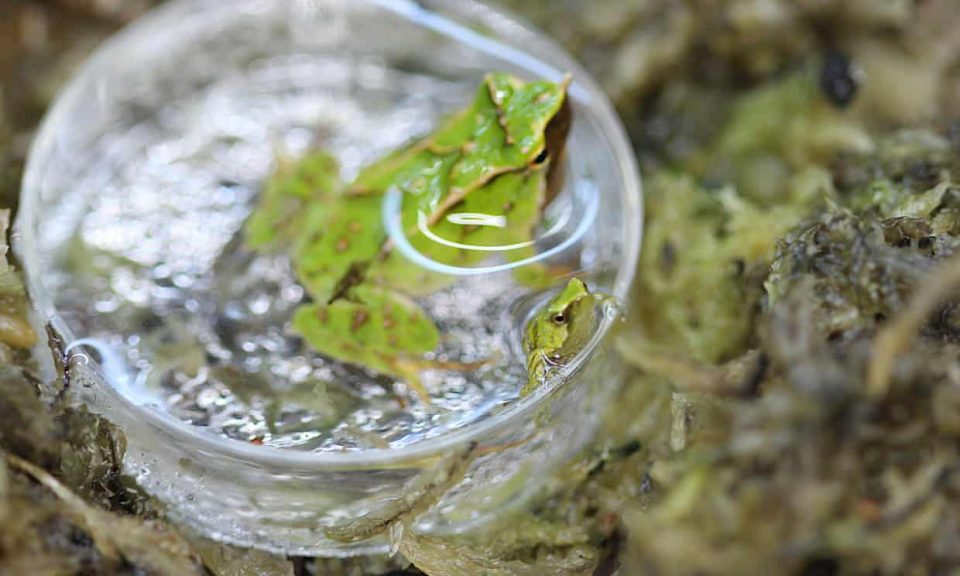A number of endangered froglets have been successfully hatched at the London Zoo following a rapid-response mission by conservationists aimed at saving members of the species from a distant national park in Chile.
In light of recent findings indicating that the deadly chytrid fungus had invaded Tantauco Park at the southern end of Chiloé Island, researchers hurried to the site to prevent the extinction of some of the last remaining Darwin’s frogs.
Once viewed as a safe haven for this endangered species, the island saw a staggering 90% decline in frog populations in 2023 due to the chytrid fungus, recognized as possibly the most destructive infectious disease affecting animals.
Dr. Andrés Valenzuela-Sánchez, a research fellow with the Zoological Society of London (ZSL), noted, “It became evident that the situation was extremely dire. We quickly determined the necessity for immediate intervention and an emergency rescue mission.”
Over the past three decades, chytrid fungus has spread globally, wreaking havoc on amphibian populations, resulting in the extinction of at least 90 species and impacting countless others. Highly vulnerable to this disease, Darwin’s frogs—discovered by Victorian naturalist Charles Darwin in 1834—succumb to infection within weeks.
During a five-day mission to the park last October, the rescue team captured 55 Darwin’s frogs. Local guides assisted in locating the frogs by imitating their calls, which prompted the creatures to respond.
Shortly after capturing the tiny frogs, each weighing just 2g as adults, the team discovered that 11 males were carrying developing young. In a distinctive reproductive process, males fertilize eggs laid by females on the forest floor, later collecting them into their mouths and transferring them into a vocal sac for a period of brooding. The tadpoles gradually undergo metamorphosis before being born as froglets.
To determine if the frogs were infected with the fungus, skin samples were taken and analyzed at a laboratory in Santiago, the Chilean capital. Two frogs tested positive for contamination, while the other 53 were cleared for their lengthy journey—approximately 8,000 miles (13,000 km)—to London via a combination of boat, plane, and van.
Upon arrival, the frogs appeared to be in excellent health and were placed in a newly established biosecure room at the zoo that replicates their natural habitat’s cool temperatures, rainfall, lighting, and vegetation. Once acclimated, the males that had been carrying tadpoles released 33 froglets into the enclosure, each measuring around 5mm.
Valenzuela-Sánchez remarked to the Guardian, “We now have the founders, the initial adults, and this first generation of offspring born at the zoo.” The researchers are now focused on breeding the frogs and exploring potential treatments for chytrid fungus to enable the amphibians’ eventual return to their native environment.
The rescue effort was documented by wildlife filmmaker Paul Glynn for ZSL. His documentary, titled A Leap of Hope, is set to debut on YouTube at 6 PM GMT on Monday.


